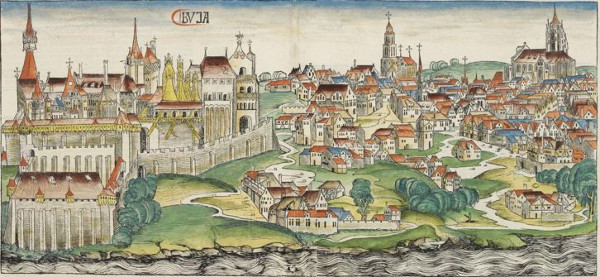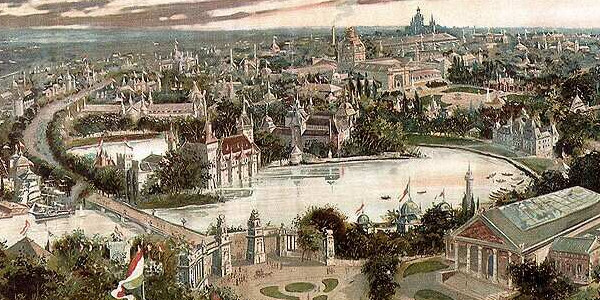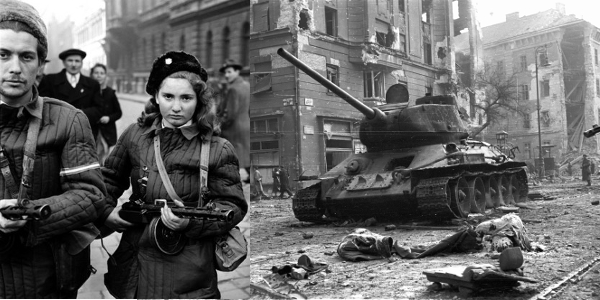Budapest has a history of more than thousand years. It was not always a capital and even the unified Budapest (the city as well as the name) developed by the end of the 19th century. One of the most beautifully situated city wasn’t shaped accidentally. The Danube, dividing Budapest – especially at the Gellert Hill – gave excellent crossing. The territory of the surrounding hills was suitable for settling and defense. Hungary’s western part was Pannonia, province of the Roman Empire. The Empire founded its city, Aquincum on the area of today’s Old Buda, garrisoned its legion and defended its long fort-line, the limes all along the Danube.
The conquering Hungarian (7 tribes) also considered it an important strategic point, maintaining centers here. The era of great migrations began after the Romans. Attila came with the Huns, and – as the legend says – the city was named Buda after Attila’s brother. However this name spread only after the Tatar invasion, when Bela IV commanded to build forts all over the country. The king himself – setting a good example – built his own castle on the New-Hill. Since that time this place is called Castle Hill.

In the Middle-Ages during the rein of Zsigmond, Buda became the permanent royal residence of the Hungarian kings. The continuously increasing palace was accomplished by the time of King Mathias. The other side of the Danube, Pest also became wealthy, growing into trade center. King Mathias declared it equal to Buda. His rein meant the Golden Age, but, unfortunately, the Turkish invasion began soon. In 1541 Buda had fallen into the hands of Turks. It was liberated only in 1686 from the Turkish regime, thus giving way to the development.
Thanks to the Habsburg Empire, families from the German principalities were recruited to the Old Buda area, settling them with considerable advantages. Being Buda and Pest the centre of the country, by the 18th Century Buda became the administrative center by the provisions of Marie-Therese and Joseph II. The Queen ordered the Nagyszombat University into the renovated royal palace. Joseph II. moved the Governorate and the Hungarian Chamber to the city. As for the architecture, this century gave the classicist style of Pest. While in Buda the Baroque buildings dominated the landscape. By the end of the century Palatine Joseph ordered important city-planning and issued the Improving Certification. Some passages of it are still in effect.
The existence of the receptive public made it possible that in spite of the then still official German language the Hungarian literature could develop. Later on the Hungarian Theater of Pest was founded. The role of the Hungarian Academy of Science and the National Theater was outstanding in the life of the middle class. Then came the moment, when on the natural dividend of Pest and Buda, on the Danube, the first crossing, the Chain Bridge was built. The effect of it brought together the two cities along with Old Buda. By melting them in 1872 Budapest was born. At that time was built the still functioning waterworks of Kaposztasmegyer and began the canalization. The tramway succeeded the horse-tramway.

In 1896 with the Millennium Exhibition was celebrated the country’s thousand years economic and cultural development. But in reality this enormous progress began in the previous twenty years. From all over the historical Hungary millions visited the grandiose exhibition and admired the improving Budapest. The Avenue (now Andrassy Avenue), the continent’s first underground, the new Franz-Joseph Bridge (now Liberty Bridge), the Art Gallery, the construction of the Fishermen’s Bastion and the almost ready Parliament building. By the turn of the century Budapest was put on the map by its bustling cultural life, its cafes, medical baths, its places of amusement and its nightlife.
In the first part of the century the progress – still from the impulsion of the Compromise – continued. In 1909-10 for example the electric street-lighting was installed. However, the WW I. and the following events, the Soviet republic and the Trianon Treaty strained to a standstill the till then progress of the city. The population nevertheless increased with the refugees from the detached regions of Hungary and by the years of 1930 exceeded the one million. Because of the mass shortage, the first housing estates appeared at this time in Budapest (for example the Wekerle-colony). Still, masses of needy lived in slums (like the Maria-Valeria colony).
WWII caused enormous damages, both in the destruction of the built legacy and in human loss as well. For example, all the bridges of the Danube were blown up by the retreating German troops. The Buda Castle, the public buildings and most of the houses had been totally destroyed. In the inner districts there were no streets without buildings that were in such poor condition, that they could not be renovated. During the following four years, the population succeeded with the reconstruction and new districts became part of the capital. With the separation of two districts in the recent past, the capital consists of 23 administrative districts.

In the 1956 revolution, during the battles, several buildings and the traffic system incurred losses. After the renovation in the 60-s, began the construction of the housing estates and in the 70-s, the development of the second, later on the third underground lines. In the 60-s the new Elisabeth-Bridge was also opened to the public.